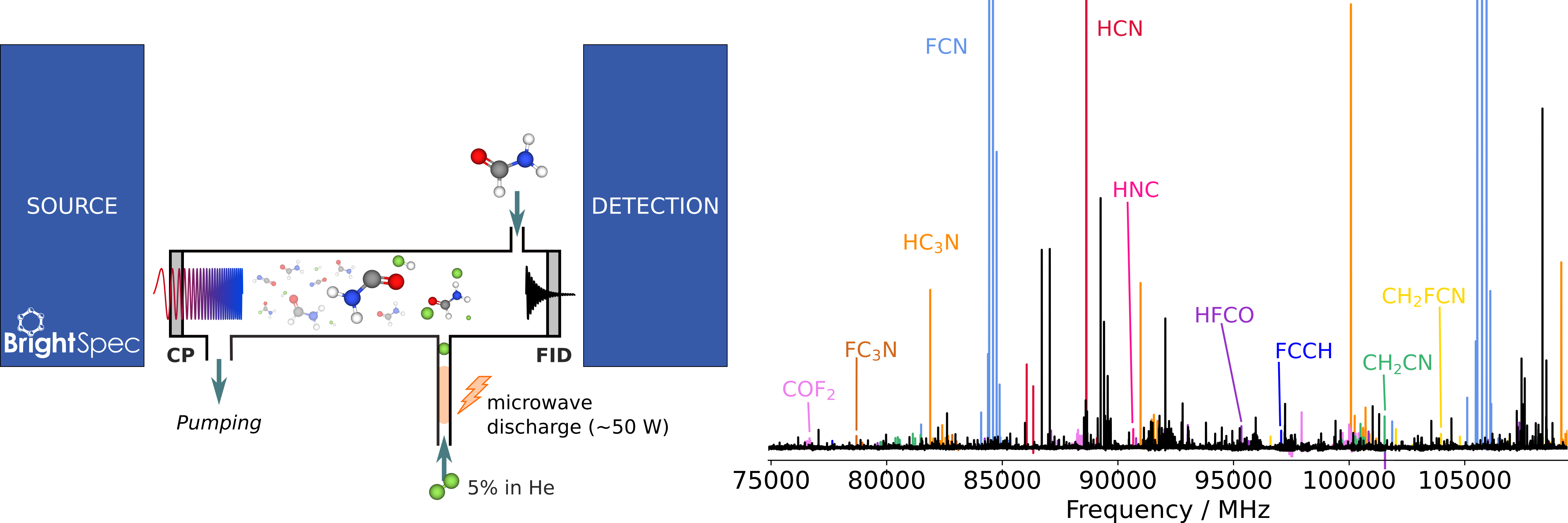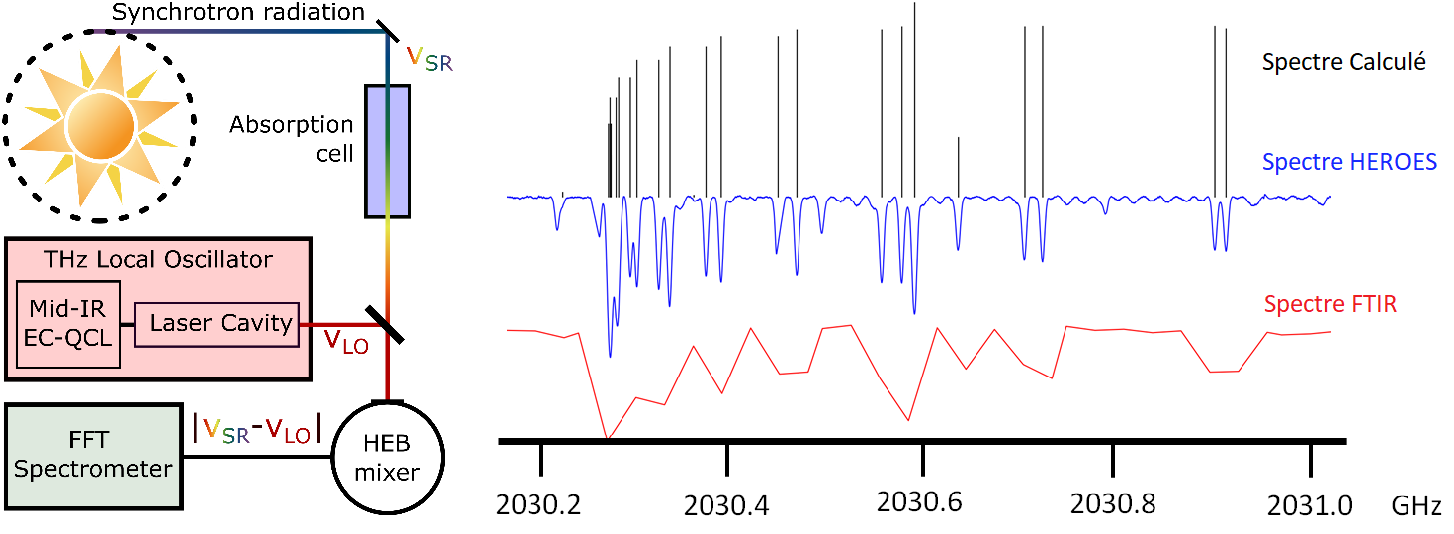The advent of new observatories of the interstellar medium such as the Atacama Large Millimeter Array (ALMA) and the Northern Extended Millimeter Array (NOEMA), which observe distant interstellar objects in the millimeter and sub-millimeter range (broadly speaking, 5 GHz – 1 THz), has brought about a pressing need for laboratory data in this spectral range on molecules of astrophysical interest.
In order to enable new detections of molecular species in the interstellar medium, our team develops and utilizes cutting-edge experimental and theoretical tools to study both stable and reactive molecules. The molecules we focus on range from small organic radicals (from diatomic species to those with 7–8 atoms) to large closed-shell carbon-based molecules (up to about twenty atoms; PAHs, diamondoids, and their derivatives).
Our team maintains an active instrumentation program conducted at ISMO and on the AILES infrared beamline of the SOLEIL synchrotron, to which we have privileged access. We record both pure rotational and rovibrational spectra of molecules of interest in a range that spans from millimeter wavelengths to the mid-infrared, where the observed transitions serve as molecular fingerprints.
Millimeter Wave to THz Spectroscopy at ISMO
We are equipped with sub-millimeter spectrometers that allow us to scan the 75–1500 GHz range using electronic sources (via frequency multiplication chains), and with a wideband (chirped-pulse) spectrometer covering the 75–110 GHz range. A recent access to the REFIMEVE+ reference signal network enables us to open a new research avenue in high-resolution spectroscopy in the THz range, for which we are developing a spectrometer based on photomixing techniques.
Several setups allow us to study different families of molecules:
– Cells for the study of low-reactivity molecules
– Cells dedicated to reactive species (radicals, ions, transient molecules) produced by various techniques (electric discharge, radiofrequency, microwave, or hydrogen ablation by fluorine atoms)
– A supersonic jet equipped with an electric discharge system

Illustration of the chirped-pulse spectrometer coupled to a reaction cell with atomic fluorine. Example of a spectrum obtained using acetonitrile (CH₃CN) as a precursor.

Illustration of the millimeter-wave spectrometer using a frequency multiplication chain, coupled to a reaction cell with atomic fluorine and employing Zeeman modulation to study radicals. Example: spectrum of the CH₂CHO radical produced by dehydrogenation of acetaldehyde (CH₃CHO).
Far-Infrared Spectroscopy at SOLEIL
Our team uses the far-infrared synchrotron radiation extracted from the AILES infrared beamline at the SOLEIL synchrotron to record and analyze absorption spectra of molecular species in the gas phase. These spectra are recorded using a Fourier Transform interferometer (Bruker IFS125), whose ultimate resolution of 30 MHz allows the rotational structure of many molecular systems to be resolved.
In conjunction with the AILES beamline and the Bruker interferometer, we have developed several experimental setups designed for the spectroscopic study of a wide variety of molecular families:
– A long-path absorption cell operating at room temperature enables the study of relatively large carbon-based species;
– Discharge and pyrolysis cells can be installed to record the far-infrared spectra of radical species;
– In close collaboration with the “jet-AILES” consortium, a continuous supersonic jet enables the study of spectra of molecular complexes as well as molecules with more than 20 atoms, cooled in the supersonic expansion.
We are also heavily involved in the development of a new spectrometer whose operating principle is based on heterodyne mixing of synchrotron radiation with various laboratory sources (molecular lasers, microwave sources). This setup enables the recording of absorption spectra with a resolution of a few tens of kHz in the far-infrared region. The spectrometer can be used in combination with all the experimental setups listed above.

Illustration of the HEROES spectrometer, whose principle is based on heterodyne mixing of the far-infrared continuum from the AILES beamline at SOLEIL with a new-generation molecular laser. A portion of the far-infrared spectrum of methanol is shown on the right side of the figure (the calculated spectrum is represented by the black vertical bars). The spectral resolution of the HEROES instrument makes it possible to resolve extremely dense spectral structures (blue trace), which are otherwise inaccessible using the commercial Fourier transform instrument on the AILES beamline (red trace).
Contacts:
Marie-Aline Martin-Drumel
Olivier Pirali